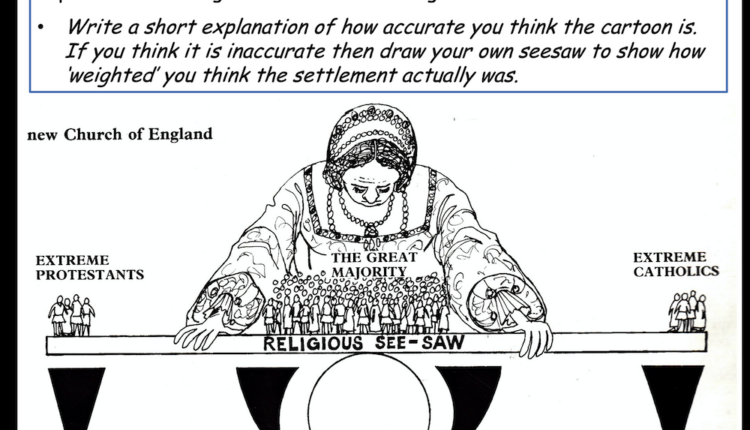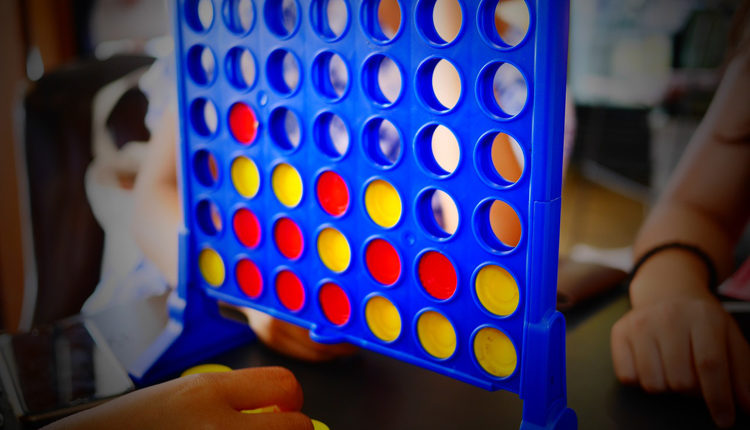Sometimes we get into a rut with our GCSE teaching. Is each of your lesson’s end product always an exam question?
Does the structure of each lesson appear a little too ‘samey’?
Does this seem familiar:
- You start with a retrieval task when they arrive. You know the type. 3 questions recalling prior knowledge.
- Next you share the topic or lesson focus and we give them some new information. It might be about Elizabeth’s religious settlement for example. Maybe the students will read through a sheet and highlight some information.
- You might then ask them to put this info into a chart.
- Then you introduce an exam question. If you have time we might model the start.
- Then, for your end product, you get them to answer this exam question.
- Often there isn’t quite enough time for them to complete this so ask them to finish this for homework.
Now there is nothing wrong with the lesson described here. Well, apart from the homework part.
But if this is your main GCSE lesson structure, and you use it most lessons, how engaging do you think it is?
Do think of your students? How interesting is this structure, if most lessons follow the same pattern?
Varying the End Products
Remember, not every lesson’s end product has to be an answer to an exam question.
For sure, by the end of the course they need to know how to answer exam questions.
But they don’t have to do this in every single lesson.
Vary some of the end products.
Make them think.
Let them use their newly acquired knowledge critically.
Example 1: Critique the Old Textbook Diagram
This is a classic.
When teaching about Elizabeth’s Religious Settlement, ensure they know the differences between Catholic, Protestant and Puritan beliefs.
We do this by listening and / or reading about each group.
Then pupils plot different beliefs on a Venn diagram:
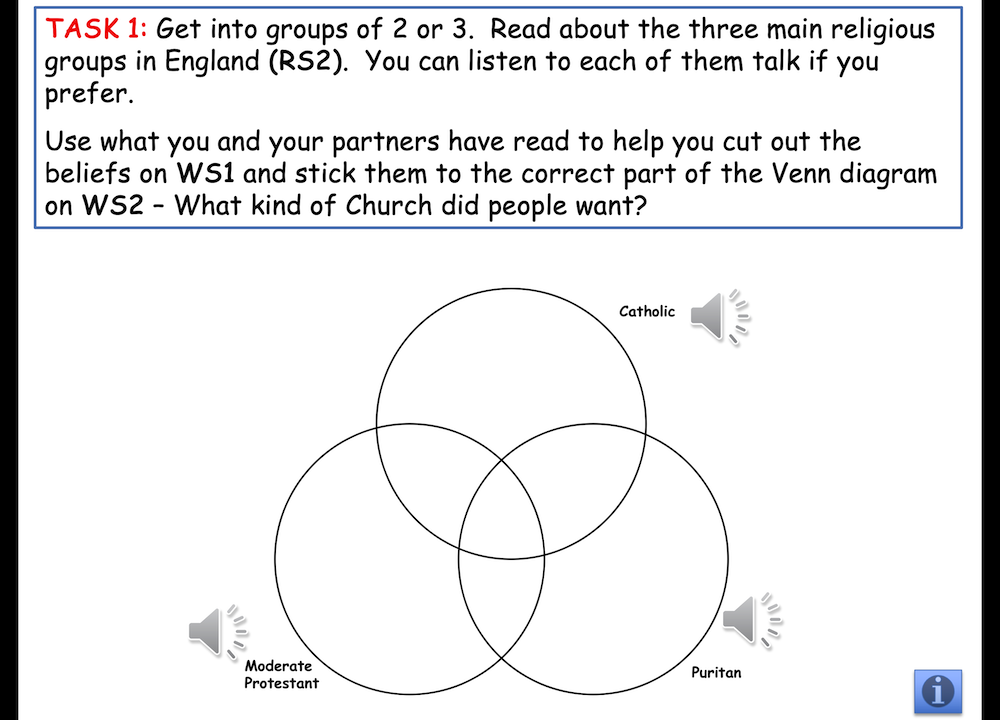
They then find out what Elizabeth’s challenges were. Next they find out about the Religious Settlement.
They use their knowledge to decide how each group might feel about this:
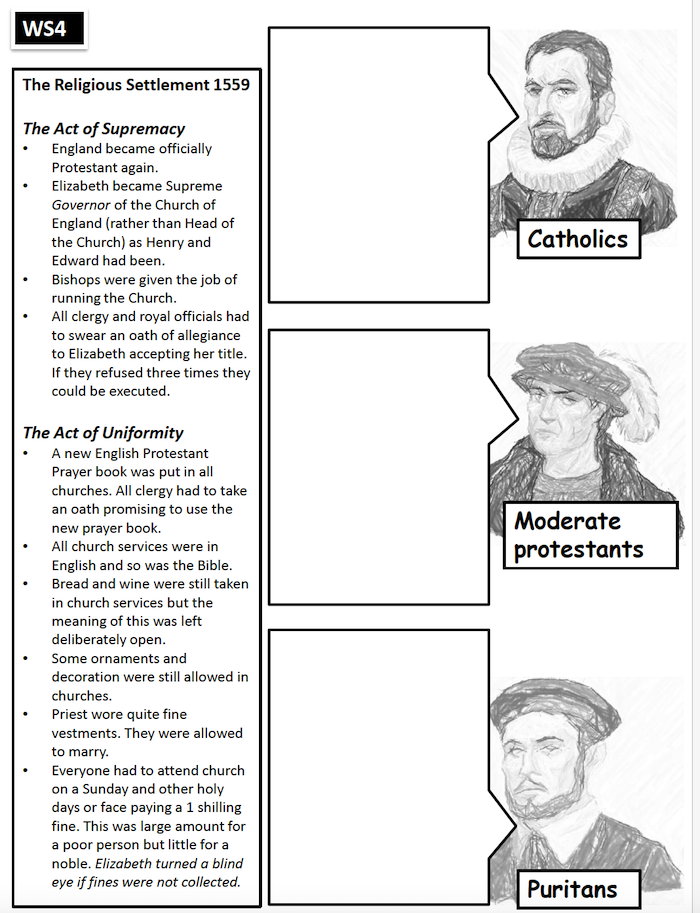
This allows them to know which way Elizabeth ‘weighted’ her settlement.
Finally, introduce this classic diagram from the lovely Peter Moss books. These books were published in the 1970s and 1980s and had brilliant diagrams in them.
You have probably all heard of the ‘Tudor Rollercoaster’? This was a Peter Moss creation.
In this diagram Elizabeth is shown levelling her religious see-saw. But was it really that level? Did it tip more towards the extreme Catholics? Or the extreme Protestants?
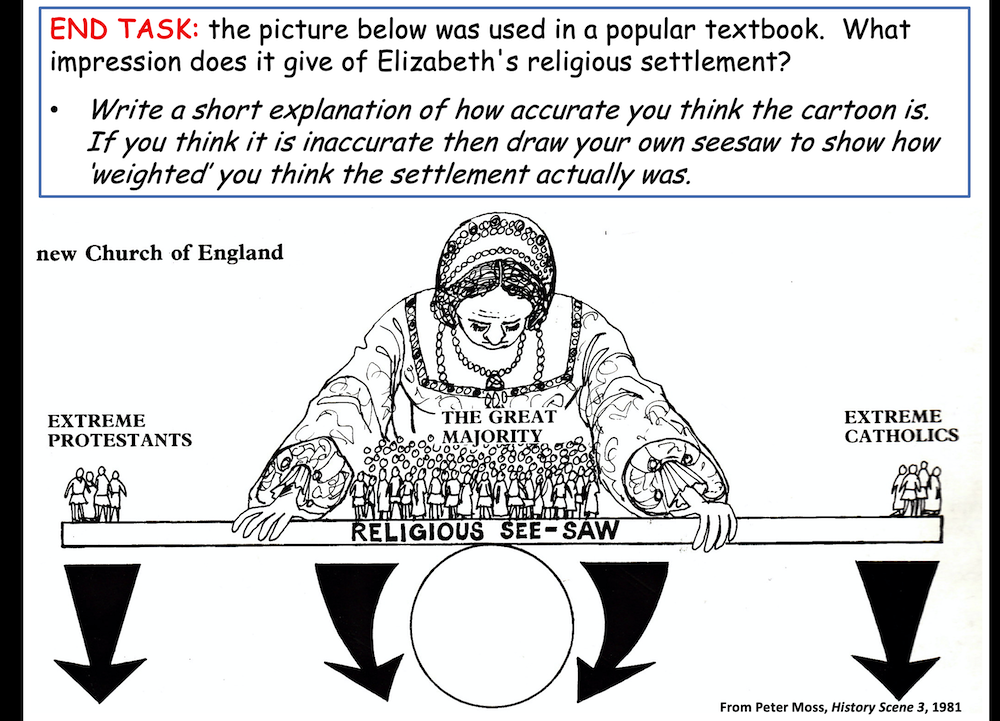
The end product is simple and effective. They critique the diagram, using their knowledge from the lesson.
They explain how accurate the diagram is, using their newly acquired knowledge. Then they re-draw the see-saw, showing how it might tip.
You can download this lesson here.
Example 2: Which Portrait Should Stay in the NPG?
This is a classic.
It is a simple idea. The National Portrait Gallery is re-hanging its Tudor room and only wants to include one of the two great Elizabethan men: Sir Walter Raleigh or Sir Francis Drake?
Who would the students choose?
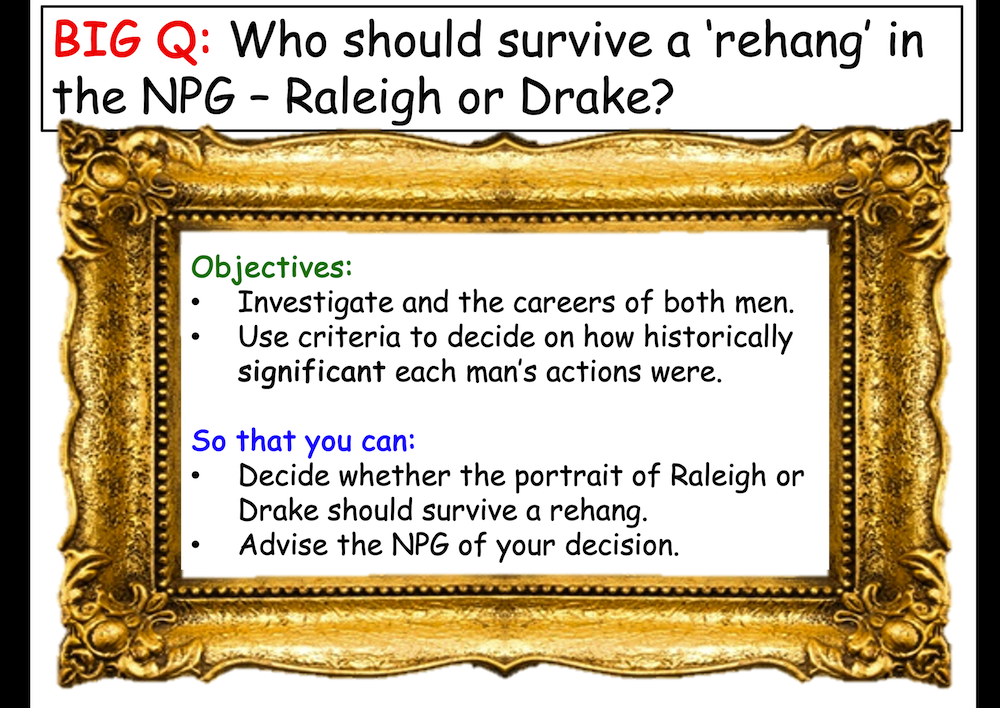
They investigate each individual. In this particular lesson, they map Drake’s circumnavigation on a map. You read more about mapping activities here.
They use clear criteria to rate each ‘hero’. Here they use:
- Geographical Knowledge
- Treasure and riches for England
- Trading Opportunities
- English Strength and Prestige
This particular lesson uses what we call a ‘radar graph’. This is where they rate each criteria on a scale of 1-5. After adding notes, they then join Drake’s up to see the shape. They repeat the same for Raliegh:
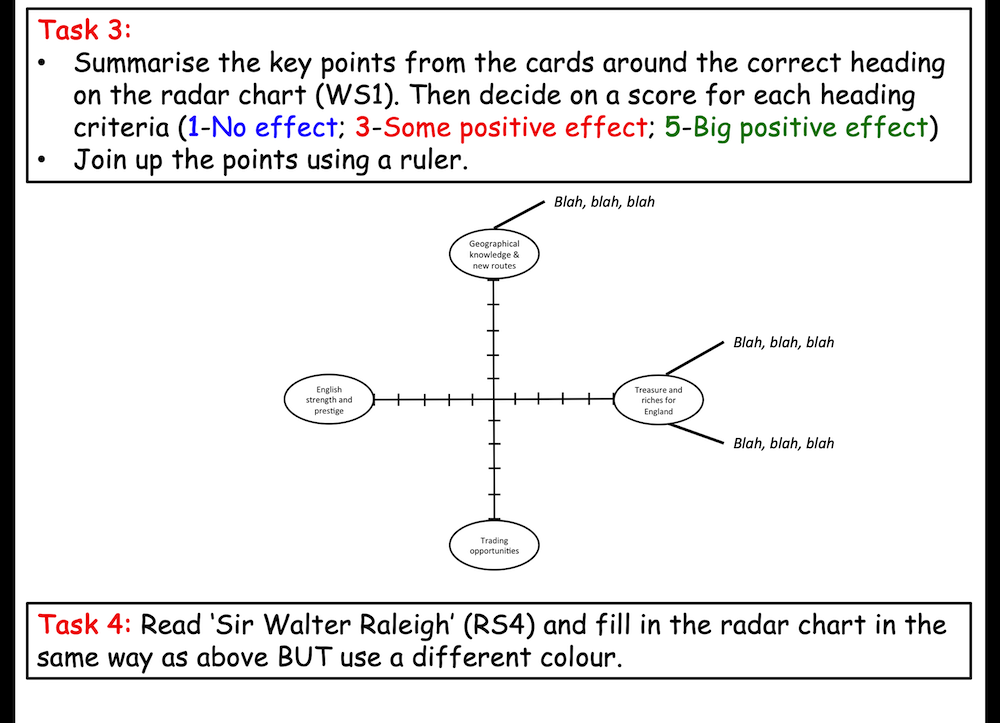
Finally they apply this knowledge in the lesson to the end product. They write to the NPG, explain whose portrait should stay in the gallery. They use the 3 steps below.
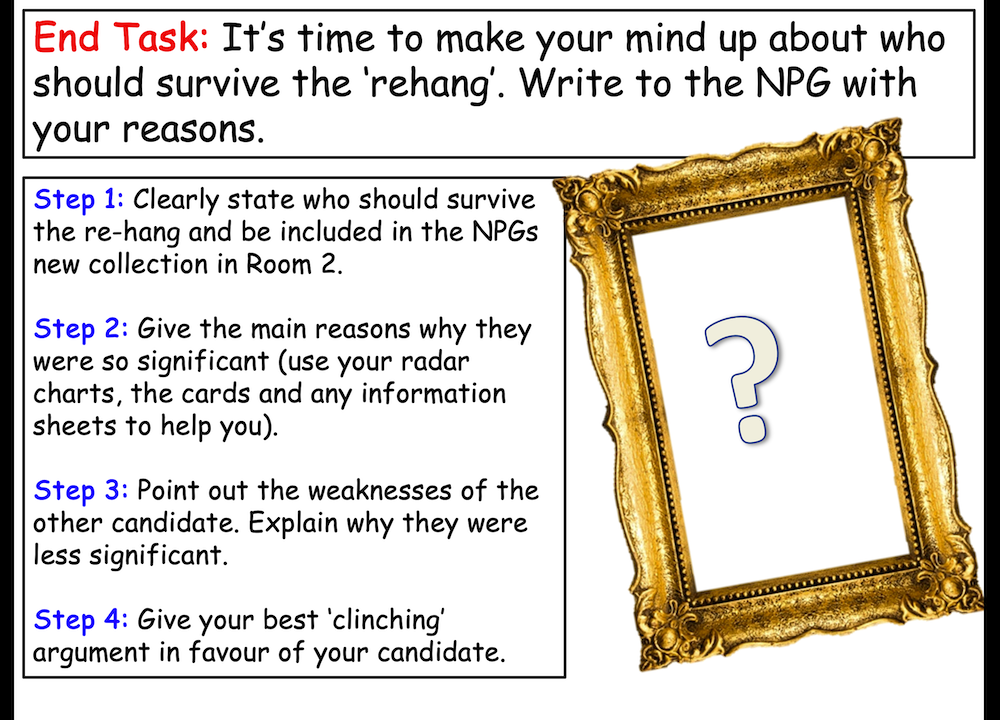
Remember, try and give enough time for them to complete the end product.
If this means spending the start of another lesson completing it, this is fYou can download this lesson here.
End Product Example 3
This lesson focuses on the problems sailors faced in Elizabeth’s reign.
In fact, one historian describes the issues well here:
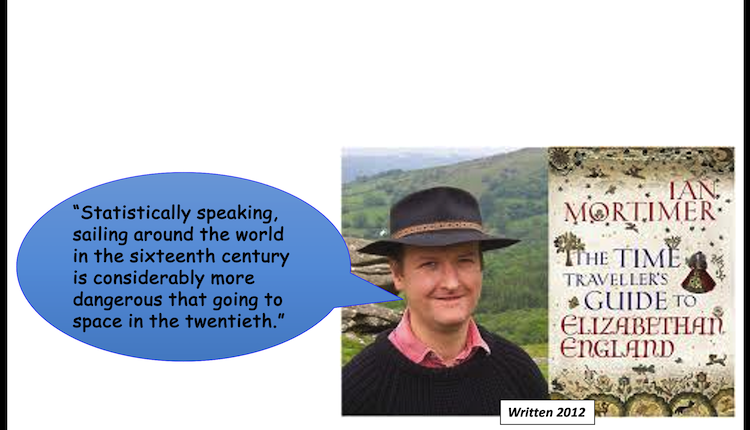
Essentially in this lesson, they focus on finding out why so many sailors went on such dangerous voyages?
They find out the main reasons for this. Then they are introduced to writings of Richard Hakluyt.
He is known for encouraging the settlement of North America by the English and promoting overseas expeditions.
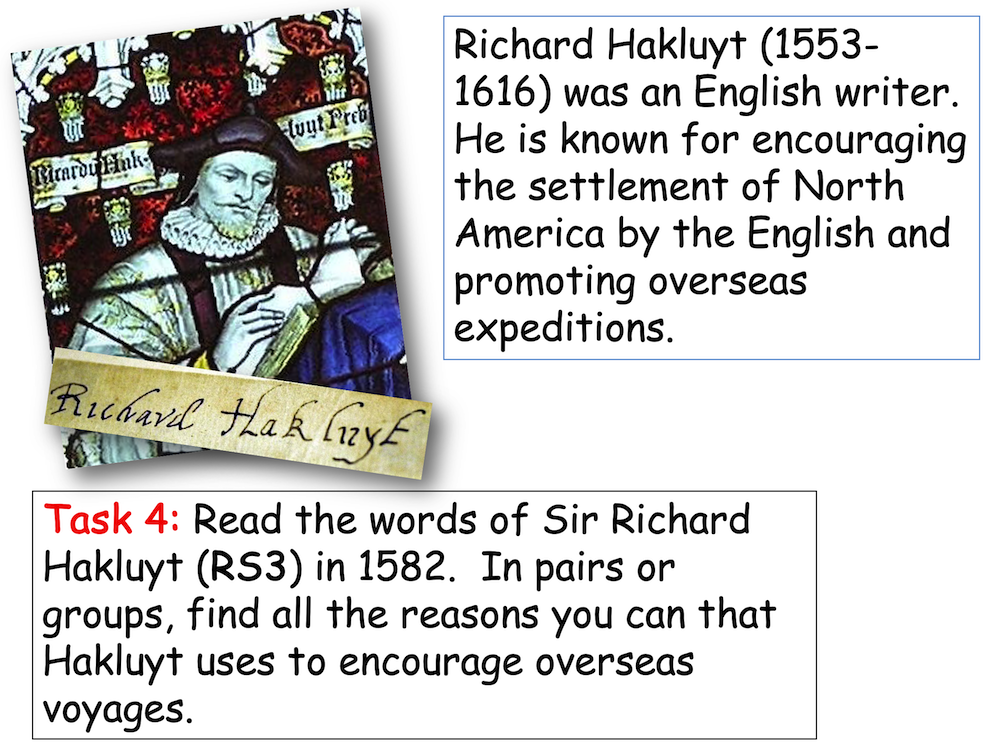
They analyse what Hakluyt says, using their newly acquired knowledge to help them interpret his words. They also use this knowledge to include reasons that he didn’t give.
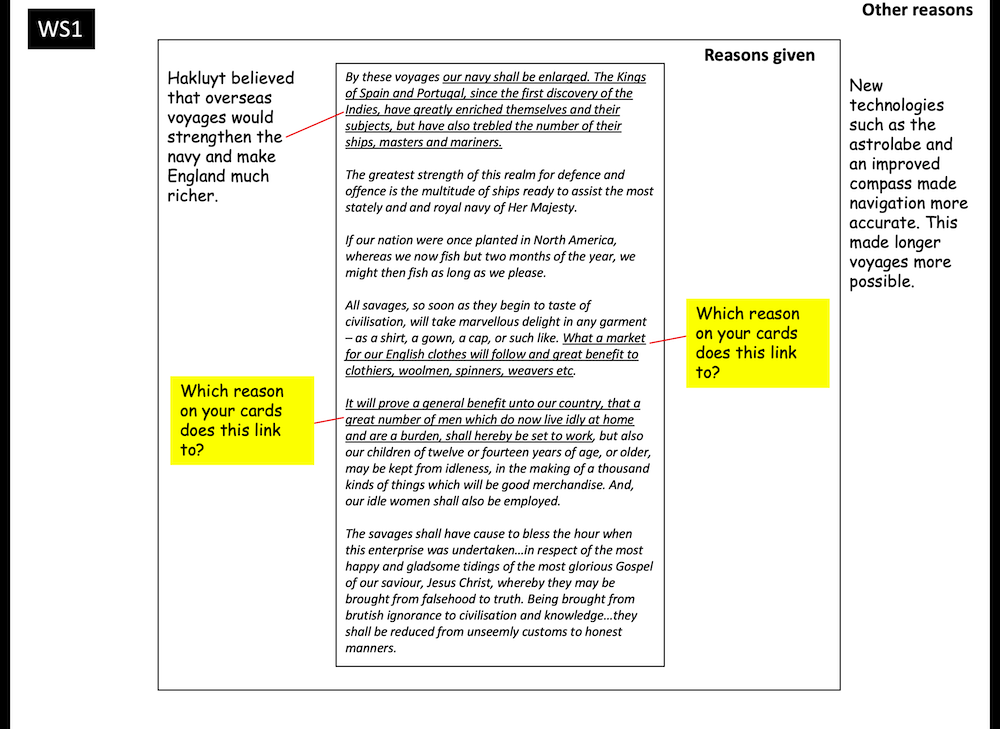
For the end product they write an improved version, explaining why Elizabeth should encourage more voyagers.
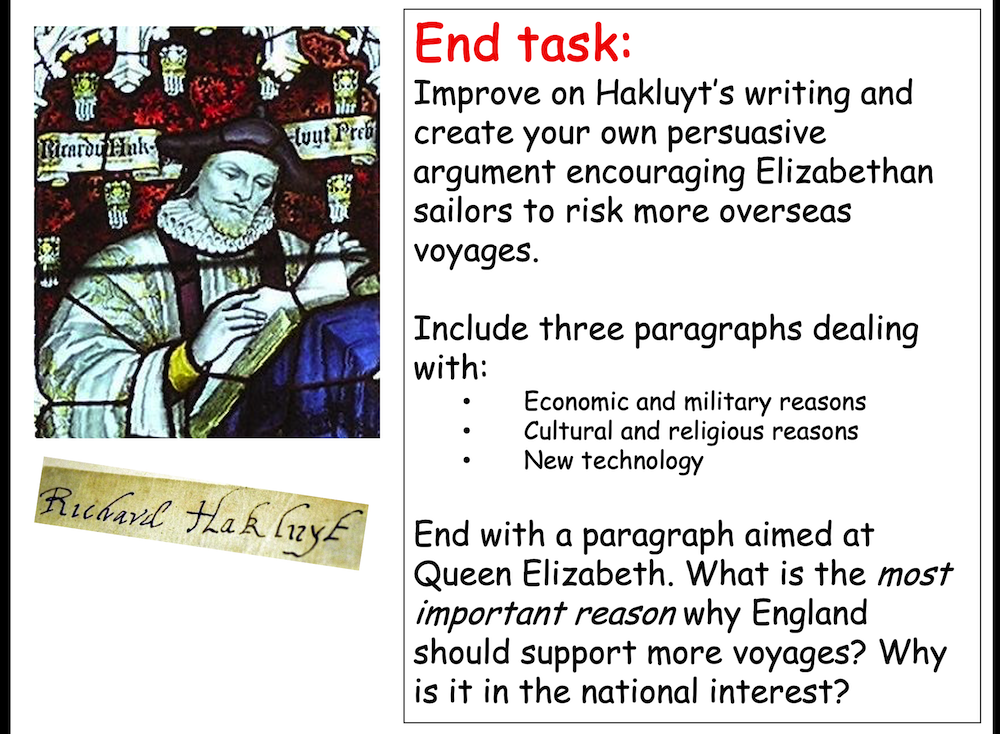
So there you have it, three different end products for your Elizabethan unit.
This gives you plenty of other opportunities to help your students understand how to answer the exam questions.
But do spare a thought for them too.
Quality first teaching, with variety, will help them to remember.


